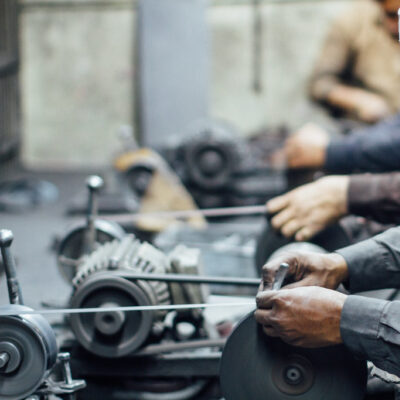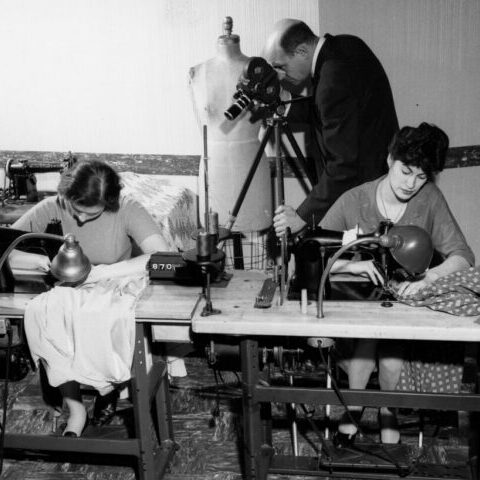Labor intensive operations is defined as a process which requires high quantities of physical effort in order to produce a good or service. Labour intensity is then measured by the proportion of labor to produce that good or service. With automation, labor intensity of the manufacturing industry has been supplanted. Operators now have the opportunity to perform tasks that require less physical effort where machines may not be able to perform independently. Having operators working alongside machines creates greater holistic value for the operation, by increasing speed, efficiency, and accuracy.
Deloitte has established a series of trends for the manufacturing industry for the year 2022. Many of these trends are a good thing, we are going to be seeing more developments around sustainability in efforts to combat the climate crises, and increased cybersecurity to protect valuable private information. However, the first and foremost largest trend is going to be labor shortages. In the USA alone, there are record numbers of unfilled jobs in the manufacturing sector that are not being met by the current labor force. In the Deloitte survey “38% of executives report that attracting new workers is their top priority for the production workforce in 2022, followed by retention (31%) and reskilling (13%).”
All this anxiety around the automation of the manufacturing industry and the resulting loss of employment remains overexaggerated. The truth remains that people and their value in the manufacturing industry is irreplaceable and more important than ever. Countless countries have reported on the desperate need for labor, including Canada, USA, European Union, and the UK. The biggest manufacturing question of 2022: labor, how do we get more of it?
Current State of Labor Intensive Operations:
Forbes has emphasized 5 main reasons for why we are experiencing unprecedented labor shortages in 2022’s manufacturing industry.
- Industry Reputation
- Manufacturing and supply chain industry enlists a strong Victorian era image of factory work. 36% of eligible workers find manufacturing unattractive work. Instead, employees are flocking towards healthcare or technology.
- A drying candidate pool
- Population growth in many developed countries has begun to slow down, either due to poor birth rates or xenophobic immigration laws that bar entry to available talent. The industry’s aging workforce has also seen a wave of early retirements during the pandemic. All of this, coupled with a youth pool that has innate misperception over manufacturing, has decreased the candidate pool for hiring managers.
- Increased demand:
- There is an increased labor demand coming from two ends. The evolution in technology has increased efficiency and productivity of workers and has prompted for an increase demand for skilled workers to manage this machinery. Also, simply, people want more things now. Demand for goods has increased over the COVID-19 pandemic and now businesses need to meet that demand.
- Skills gap
- Many potential candidates do not have the necessary combination of technical, physical, and soft skills for an increasingly complicated and technologically savvy manufacturing environment. Workers with a skillset of both blue collar and white collar workers —also known as new collar workers— is a small pool that is not expanding large enough.
- A shift in the work-life balance
- Stay-at-home orders have blurred home and work priorities as people have stayed home for most of the year. Women are also double burdened with both domestic and work responsibilities. Now after the pandemic, many people are choosing to find companies with proper benefits and working culture that can help them remain connected with their families. Furthermore, many are prioritizing their mental and physical health, so working in proximity with many other factory personnel is not worth it in the face of a pandemic. cs
Until governments improve policies around slowing birth rates or opportunities for skills-based education, companies can increase their desirability and improve training for potential workers. However, actualizing these solutions are hard, and companies are resistant. Increasing wages or having lengthy onboarding programs are all costs in which companies may not want to front. Resolving 2022’s labor shortage will require help.
Industry 4.0 revolution, a sociocultural revolution.
Technological shifts have gone hand in hand with shifts in social and cultural practices. Advancements in AI will ease the social and cultural changes that companies are going to need to make in 2022 manufacturing. Companies are going to have a competitive advantage if they are able to hire, retain, and attract workers.
The McKinsey Report has demonstrated how AI technology can transform the ways in which people work and their value at work. Analytics will be the major solution to productivity and the labor shortage.Motion measurements, cycle time measurements, location tracking, and digital performance management can all provide a breadth of data that will improve the shop floor experience. There are two major solutions: dynamic scheduling and digital training.
Video analytics powered by Industry 4.0 technologies will be able to provide a scheduling mechanism that will bridge labor gaps. When workers need time off, either due to health or family obligations, an AI system can calculate and delegate jobs far faster than any human scheduler. Algorithms can match skillset to workstation and create a perfect flow for personnel changes. Companies like PowerArena are developing this technology to make factory work more appealing for new recruits. Hopefully, a flexible workflow can create opportunities for greater work-life balance that will greatly improve a factory’s recruitment pool. This will be a major solution for 2022’s labor shortage.
Furthermore, at PowerArena, video playbacks and annotated graphics can help improve the onboarding and retraining processes that occur in a factory. Detailed AI enhanced videos can help train future workers on complex and minute SOP processes of a workstation. Real time alerts can relieve the stress of making mistakes. When a step is skipped or done in the wrong order by an operator, alerts are immediately issued allowing for correction.Training for workers becomes quick and inexpensive. Factory managers, therefore, do not have to worry so much about quick turnover rates if they are able to train new recruits more efficiently.
At the end of the day, labor shortage solutions for 2022’s labor crisis will only be resolved with the help of AI.
Contact us to learn more about how we can help.




